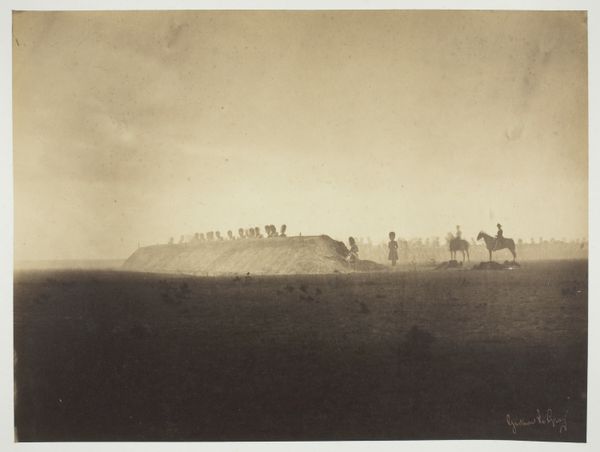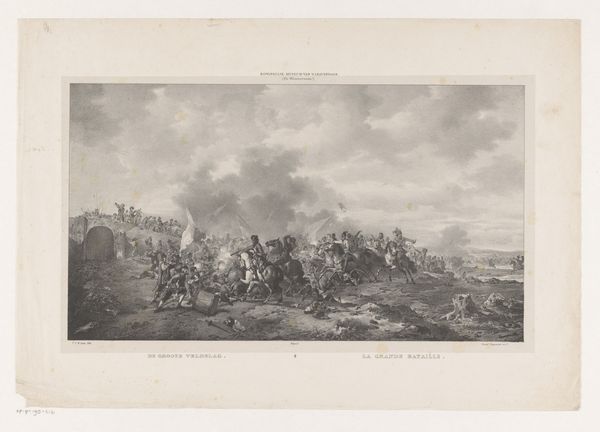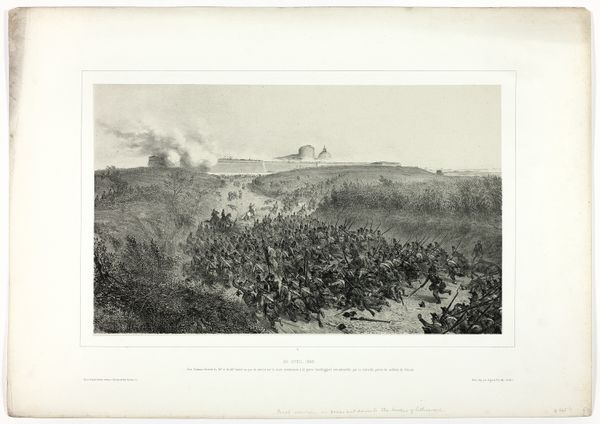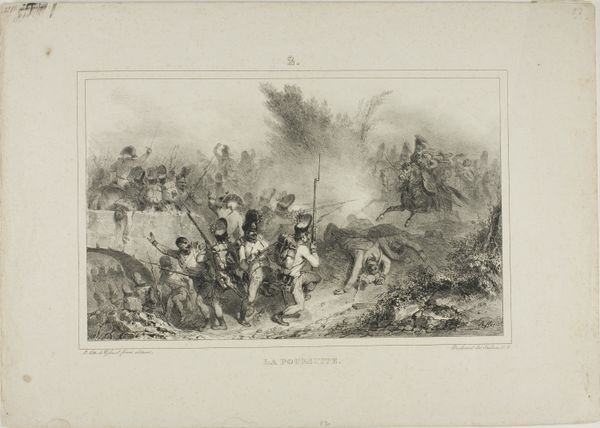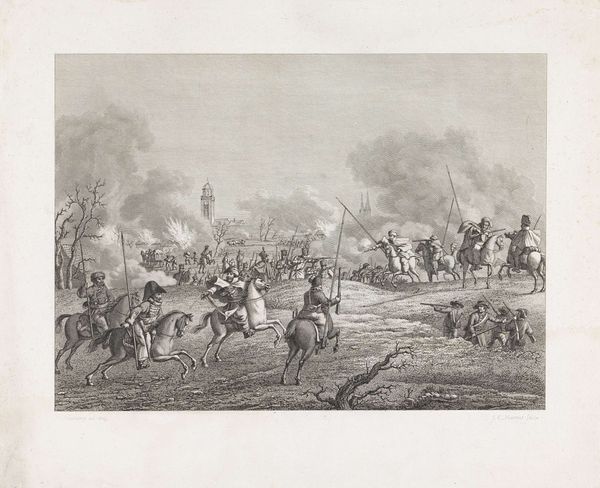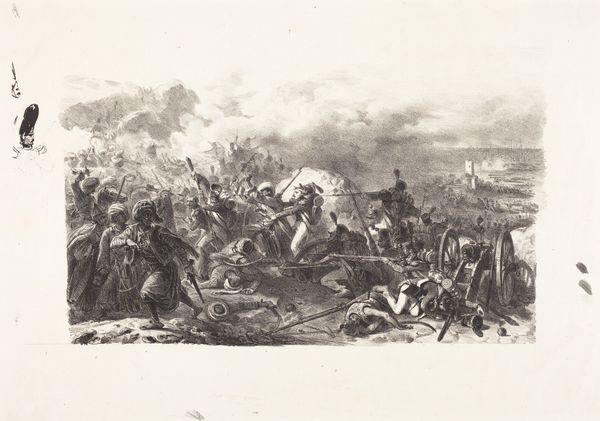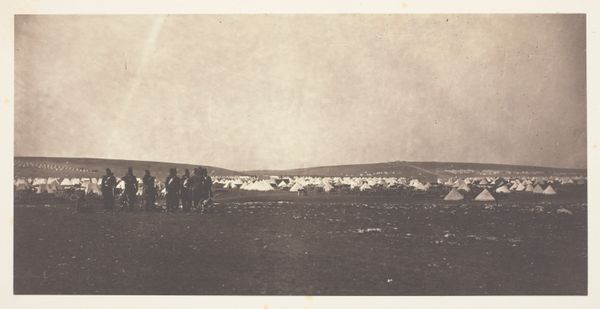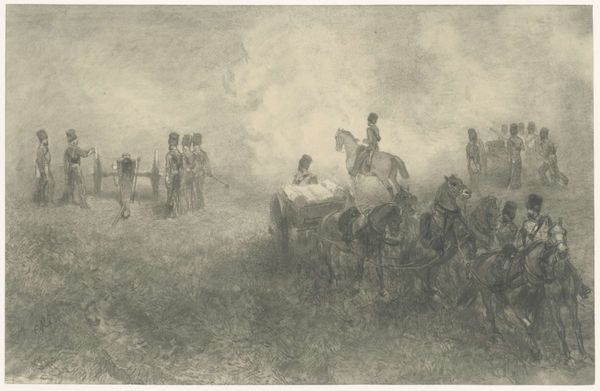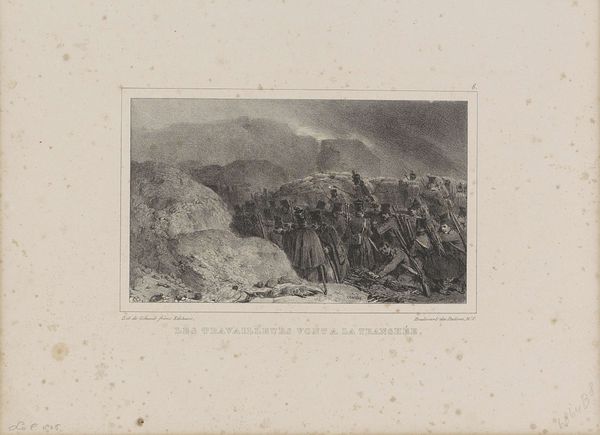
photography, gelatin-silver-print
#
landscape
#
photography
#
gelatin-silver-print
#
history-painting
#
realism
Dimensions: height 175 mm, width 254 mm
Copyright: Rijks Museum: Open Domain
Editor: We’re looking at a gelatin silver print of “Schilderij van de slag bij Nieuwpoort, 1600,” dating roughly between 1880 and 1930, attributed to an anonymous photographer, and housed at the Rijksmuseum. The sepia tones lend the chaos of the scene an almost dreamlike quality. What are your first impressions as a historian? Curator: This photograph documents a painting depicting a key moment in Dutch history, likely intended to foster national identity. The very act of photographing this artwork—reproducing and distributing it—speaks volumes about the power of art to shape public memory. How does photography here affect our perception of history painting, or perhaps even the depicted history itself? Editor: That's a great point, the photographic grain certainly shifts its feeling from glorious to somewhat removed. What does it say that someone chose to document and distribute *this* particular battle scene? Curator: Nieuwpoort, 1600! That specific historical battle in 1600 was pivotal in the early stages of the Eighty Years' War, signifying Dutch resistance against Spanish rule. Consider the political climate of the late 19th century when this photograph was likely created: a burgeoning sense of Dutch nationalism and a need to visually represent heroic struggles for independence. Doesn't it feel staged to you? It might say more about 19th-century views of warfare than 17th. Editor: Absolutely. Knowing it was taken later gives a layer of constructed heroism, rather than raw immediacy. Is the staging a product of the museum or of the initial painter’s process? Curator: I would suspect the painter's. Consider the public function of these types of images; the artist’s creation aimed to instill patriotism by idealizing war. The photograph then democratizes and spreads the political message. So in this context, how do we balance artistic interpretation with historical accuracy? Does the romantic depiction influence viewers to either glorify war or dismiss it as outdated propaganda? Editor: I never considered the intent behind it all. I appreciate seeing how political and social forces can directly influence how art is created, disseminated and perceived across time!
Comments
No comments
Be the first to comment and join the conversation on the ultimate creative platform.


